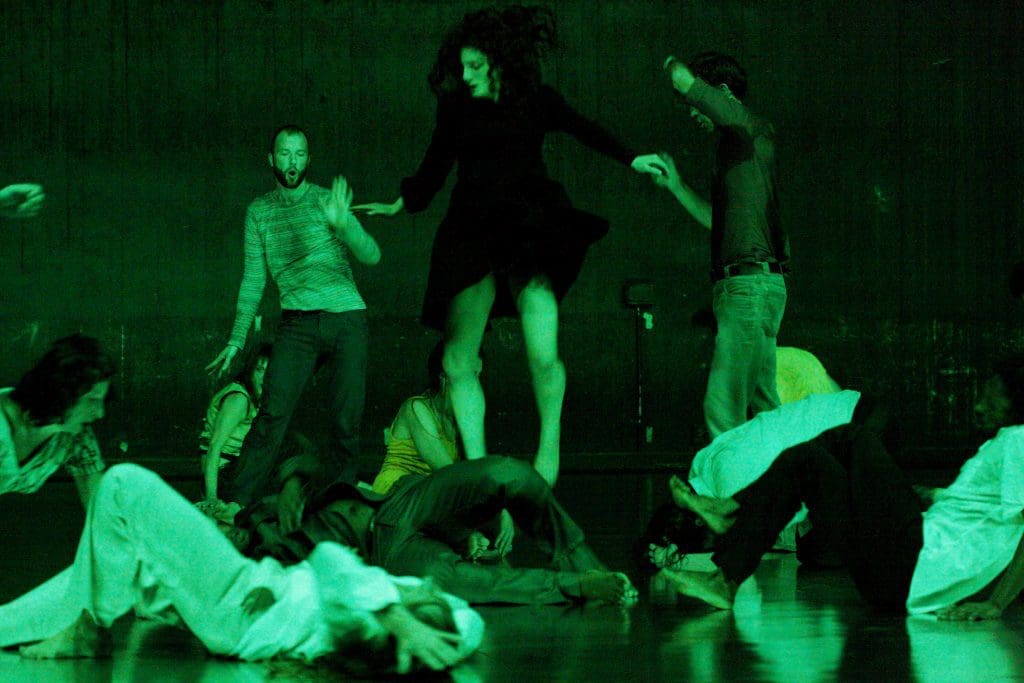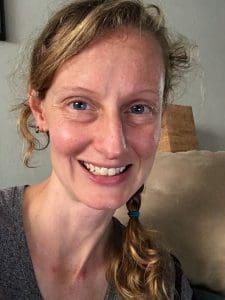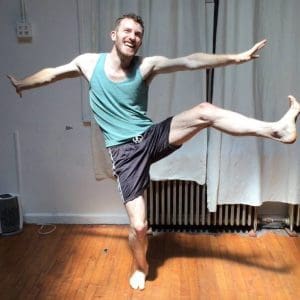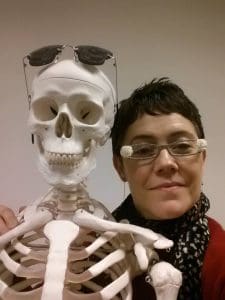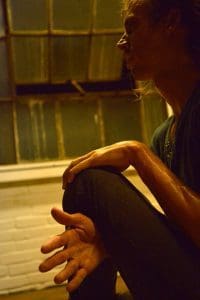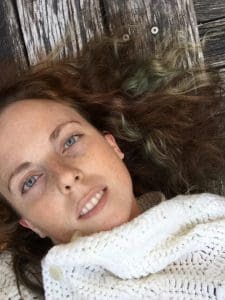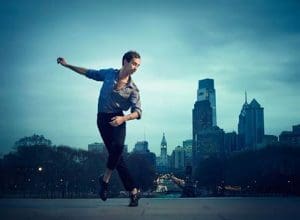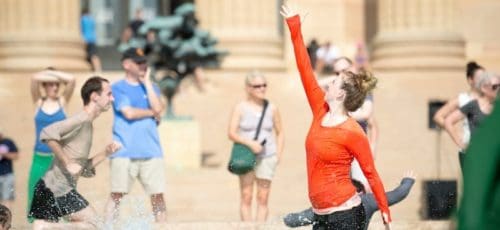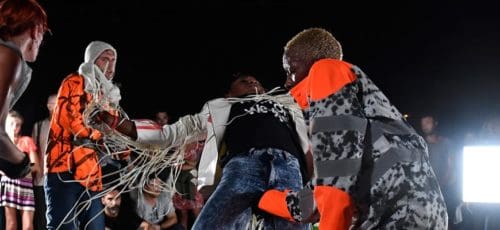Meet the dancers of Levée des conflits’ professional workshop, Pt. 3
On September 9th and 10th FringeArts and Drexel University’s Westphal College will present Levée des conflits, a dance in the round from world-renowned choreographer and dancer Boris Charmatz, as part of the 2016 Fringe Festival. Beginning September 7th, Westphal is hosting a series of lectures and workshops—professional and community—around the performances as part of a series dubbed Boris Charmatz: Dancing Dialogues,capped off with an informal performance from the professional workshop of 24 local dance artists. In anticipation, Dancing Dialogues has been profiling each participant and we’ll sharing their reflections on their craft here. (Pt.1 and Pt. 2)
Sarah Gladwell Camp
“What motivates me to make a work is really complicated and hard and almost unnamable. I think there’s something, it sounds so cheesy, but there’s something inside of me that really desires to make art and connect with people that way, and have that experience performing on stage, and experiencing the other people on stage, our relationship to them and connection to the audience. Like that moment of getting to actually present the work and be completed, and sharing this experience with somebody and have them have the experience with you. It’s definitely the driving factor for me.”
Liam Kumin Mulshine
“Having that eye from the audience is an integral part of commedia because you can’t do it without an audience. Because of that, each show is different and some shows are a lot longer because the audience is eating it up. It’s really gratifying to have real conversations with the audience where we are literally stopping and talking. Like ‘what should I do next?’, you know, and because of that the work is really just thrilling and terrifying. And it just forces you to be completely present. It’s really fun to be thrown off and be like ‘where do we go from here?’ It’s almost like playing with each other on stage and seeing if I do this, how are you going to react? So it’s a very fun collaboration.”
“It’s fun for me to watch my students to contend with stuff I know at times confounds them. When I’m watching my students work and perform, I can see them thinking and I like to see people think. I think we compartmentalize ourselves in so many ways. And we don’t give ourselves enough time and space to deal with all the stuff around us. I feel like when we allow ourselves to open up the kinesthetic sense, or we’re given opportunities to do it, we can see more of what’s happening. I like being able to see people think through lots of stuff. And certainly seeing them think through choreography.”
Gregory Holt
“I really think that every single person should study dance and performance for at least ten years. I think that living our lives is an incredible feed of success and problem solving. And I think that every single person has learned a ton in their bodies. And I really value that knowledge and that ability to do that, and the very different and very widely ranging solutions we come up with. It can be really great to be in dance and performance spaces where you are watching your body navigating the world, navigating relationships, being present with yourself, being present with others. … In so many ways my understanding of the world is funneled, or channeled, through my body’s experience.”
Shannon Murphy
“I default to trust when I’m part of a big [dancing] group. I have to trust that every other person next to me is also doing everything in their physical body to make this successful. So if they make a choice that I would never do, I have to be like ‘that is the best thing they can do right now.’
For me the role of choreographer is about how best to create a safe space for that defaulted trust. How do I create the right conditions for these people to thrive in? Maybe it’s what the room smells like when people walk in. Maybe it’s asking if we are in the right studio for this. Are they hearing the right thing? Do they know each other well enough? Do they know each other too much?”
Sean Thomas Boyt
“Usually I come to a first rehearsal with an outline of ideas I want to see. And then go from there to see what works and what doesn’t. With dancers, usually I try to work kind of against their bodies and I don’t try to create virtuosic movement. But I do try to see what doesn’t look good and what does look good and try to play with those. I’m interested in those aspects of how the dancers’ bodies work in contrast to what I’m looking for. So I guess the images that I initially want are not what I end up getting. And that’s kind of a fun part. That’s good, I like that.”

